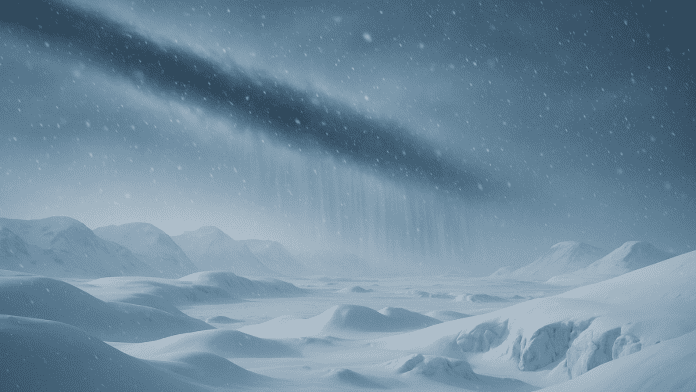🕒 Last updated on July 3, 2025
Rivers in the Sky Are Growing Stronger
A new study has revealed something worrying about Antarctica. Scientists say that atmospheric rivers—which are like rivers in the sky—are becoming more frequent and much stronger.
These sky rivers are atmospheric moisture bands that are lengthy and thin. They carry huge amounts of water, sometimes as much as the Mississippi River. When they reach land, they drop all that water as rain or snow.
Antarctica is now seeing more of these rivers. And they’re not just coming more often—they’re bringing much more precipitation than before. Using advanced climate models, scientists discovered that these rivers could double in number. The rain and snow they bring might grow by 2.5 times between the years 2066 and 2100.
The reason? A warming planet. Warmer air holds more moisture. This moisture becomes fuel for atmospheric rivers. As the Earth heats up, the sky rivers become more powerful.
Antarctica’s Ice Is Under Attack
Antarctica holds most of the world’s frozen water. One important component of what scientists refer to as the cryosphere is this frozen landmass. It includes glaciers, ice sheets, and snow. The cryosphere helps keep Earth cool by reflecting sunlight back into space.
But it’s in danger. The cryosphere is melting more quickly as temperatures rise. When ice melts in Antarctica, it raises sea levels around the world. Cities near the ocean are at risk of flooding. Homes, roads, and even drinking water could be affected.
Atmospheric rivers can dump huge amounts of snow or rain on the icy surface. When it rains instead of snows, the ice melts faster. Snow reflects sunlight. But when it melts, darker ground or water underneath absorbs heat, making things even warmer.
This new study shows that these sky rivers are becoming more active. They’re hitting Antarctica more often. And they’re dumping more water. This change could speed up the melting of glaciers and ice sheets.
Record-Breaking Signs of a Changing Climate
The study is part of a growing number of warnings. Scientists have noticed many record-breaking events tied to climate change. In 2023, sea levels reached a record high. Ocean temperatures also broke records.
The entire water cycle is changing. More heat means more evaporation. That leads to more moisture in the air. When it all comes down as rain or snow, it can cause major problems—especially in places like Antarctica.
Russia’s Arctic Gamble: Controversial Offer to U.S. Sparks Debate
Experts say the frequency and strength of these sky rivers depend on greenhouse gas emissions. The more we pollute the air, the warmer it gets. The warmer it gets, the more active the water cycle becomes. And that means stronger and more frequent atmospheric rivers.
These rivers affect snowfall in Antarctica. Snow helps build ice. But with changing patterns, snowfall becomes harder to predict. If less snow falls or if it rains instead, ice sheets may shrink even faster.
Big Projects Try to Tackle the Problem
Engineers and scientists are developing ways to lessen pollution. Around the world, countries are building cleaner energy systems. A company in Europe is testing wave energy, using the power of the ocean to make electricity. Another group of countries, including the U.S., is building a special machine in France. It uses strong magnets to test a new kind of clean energy called fusion.
These efforts aim to cut down on the pollution that traps heat in the atmosphere. By using clean energy, people hope to cool the planet. That could reduce the strength of atmospheric rivers in the long run.
But right now, Antarctica is changing fast. One aspect of a larger image is represented by the sky rivers. Every drop of water from melting ice adds to rising sea levels. The changes seen in Antarctica are a clear sign of how serious the situation is becoming.
Understanding how these atmospheric rivers behave is now a top priority for researchers. Their patterns will play a big role in what happens to sea levels and the icy landscape of Antarctica.

